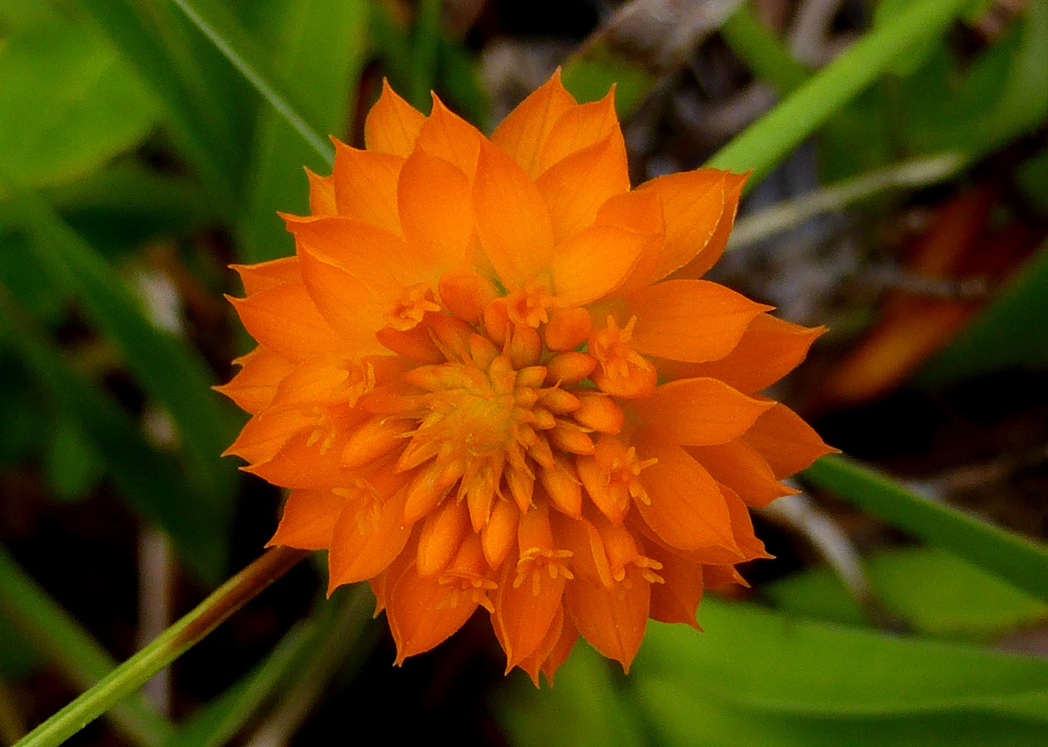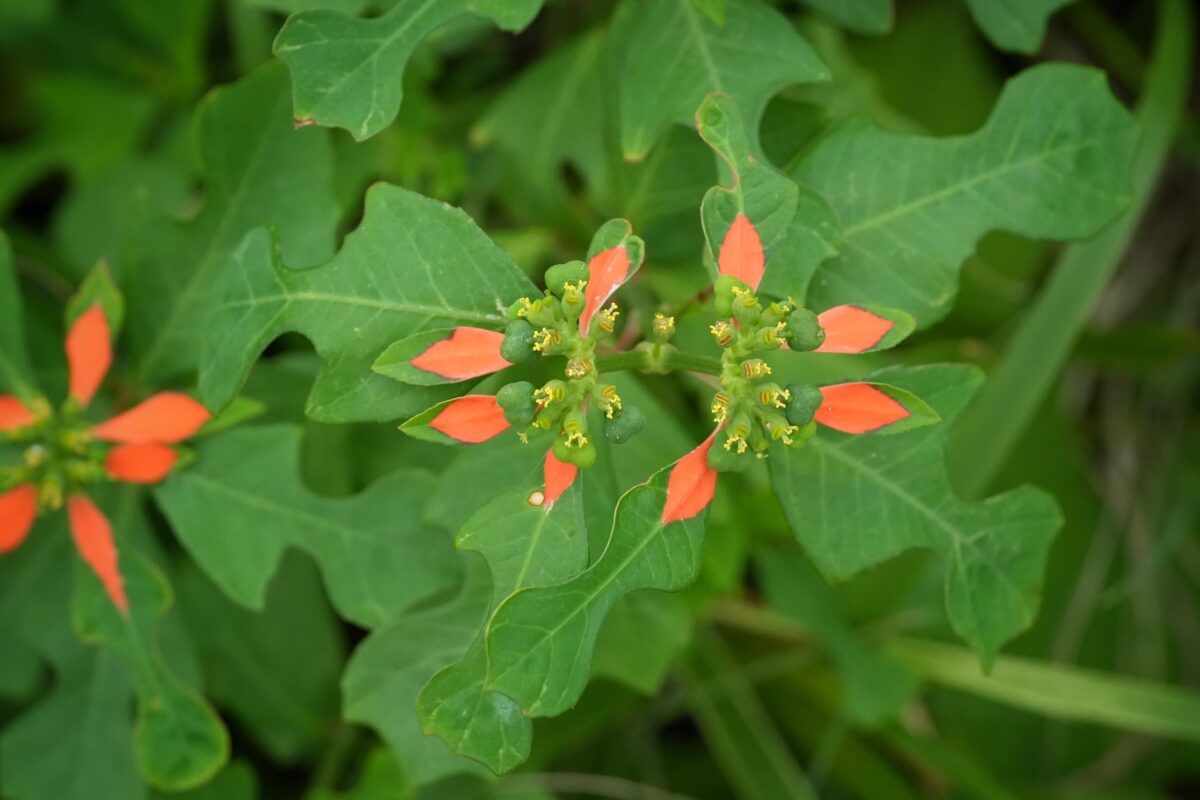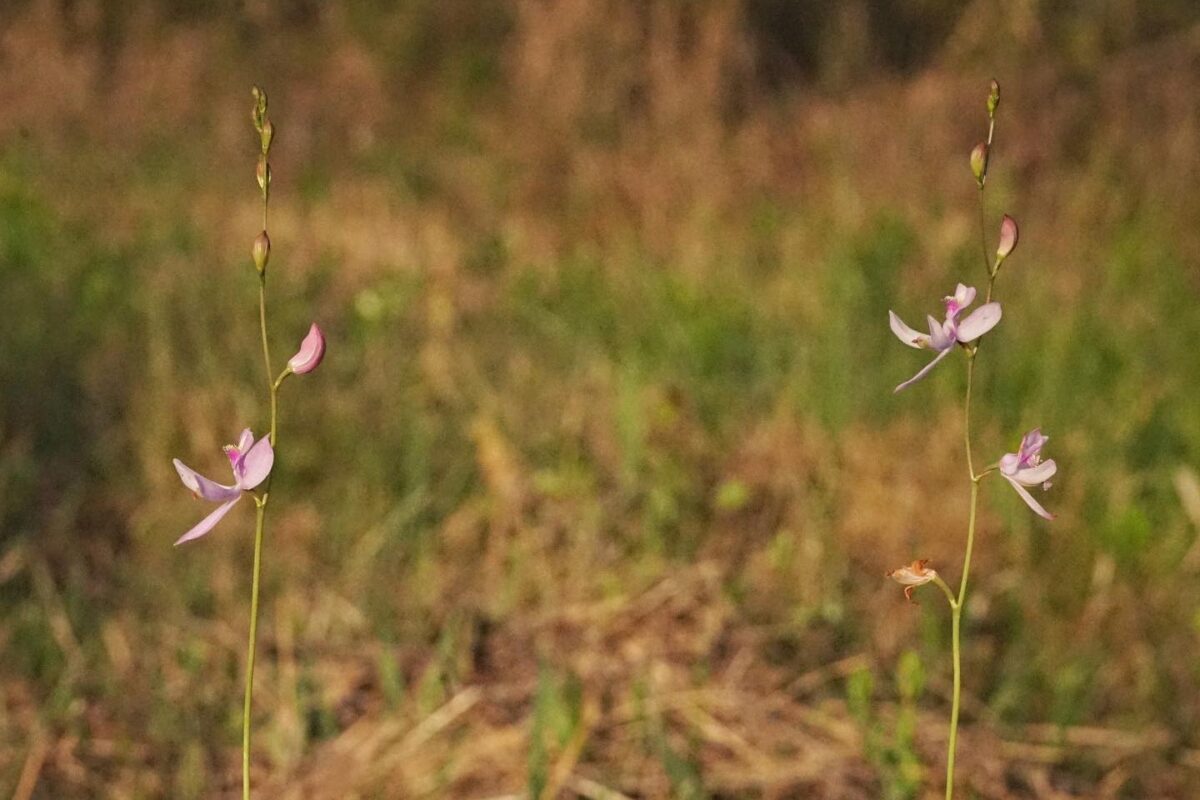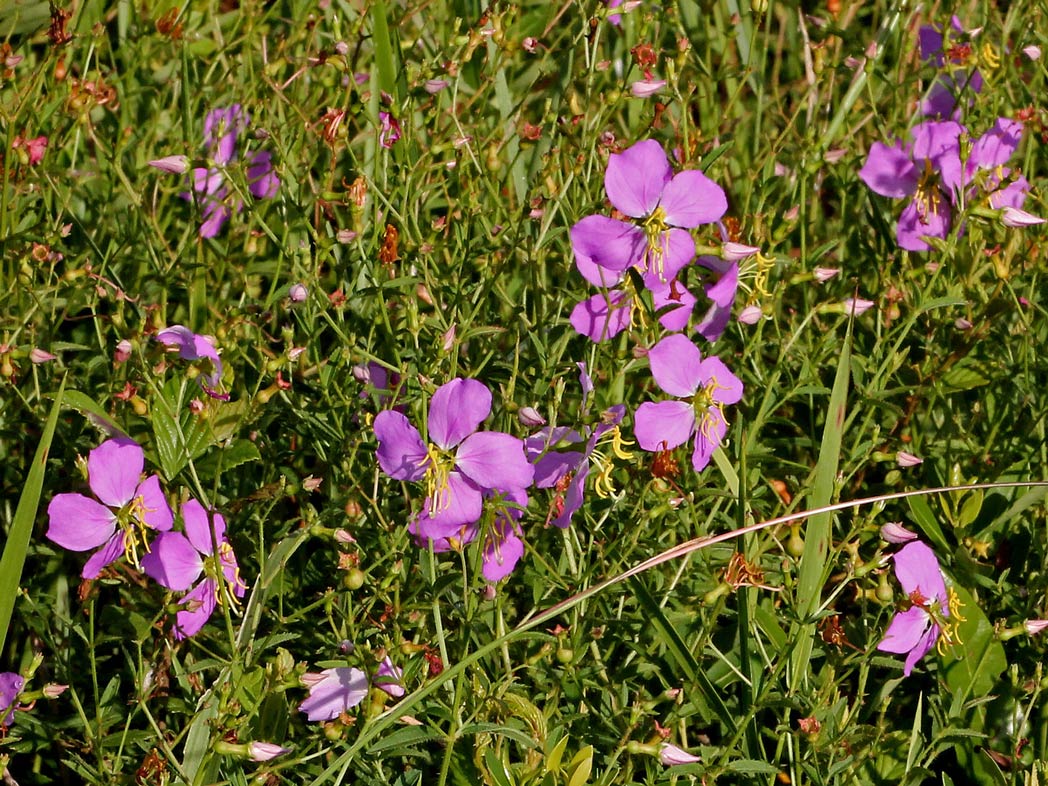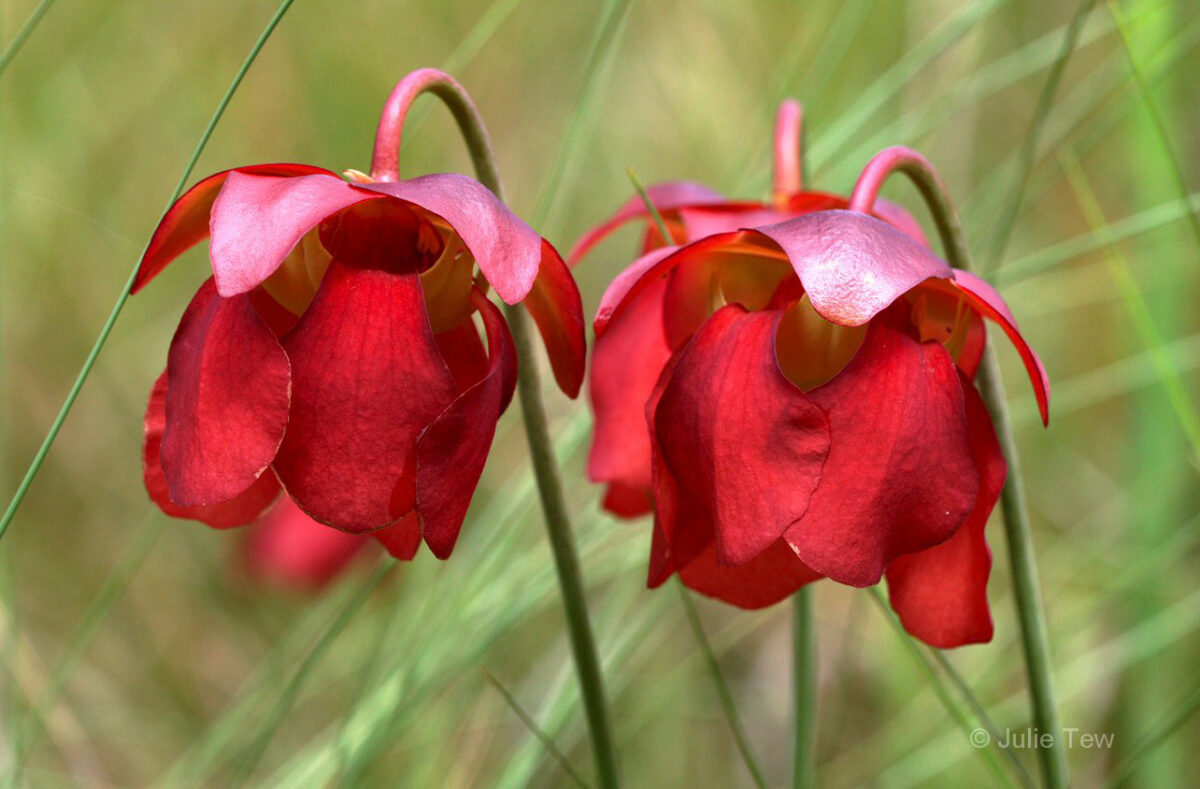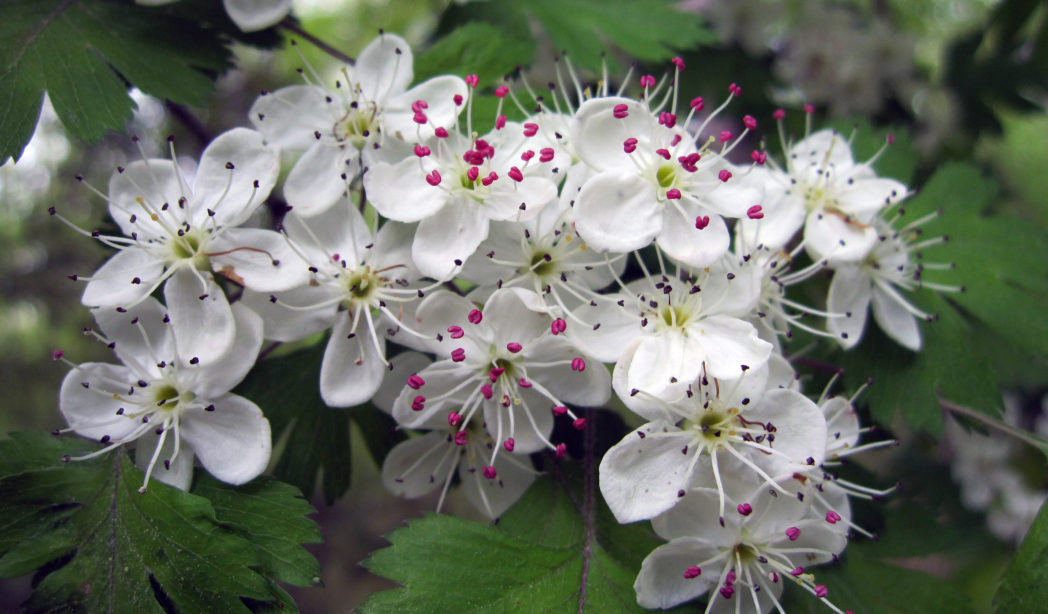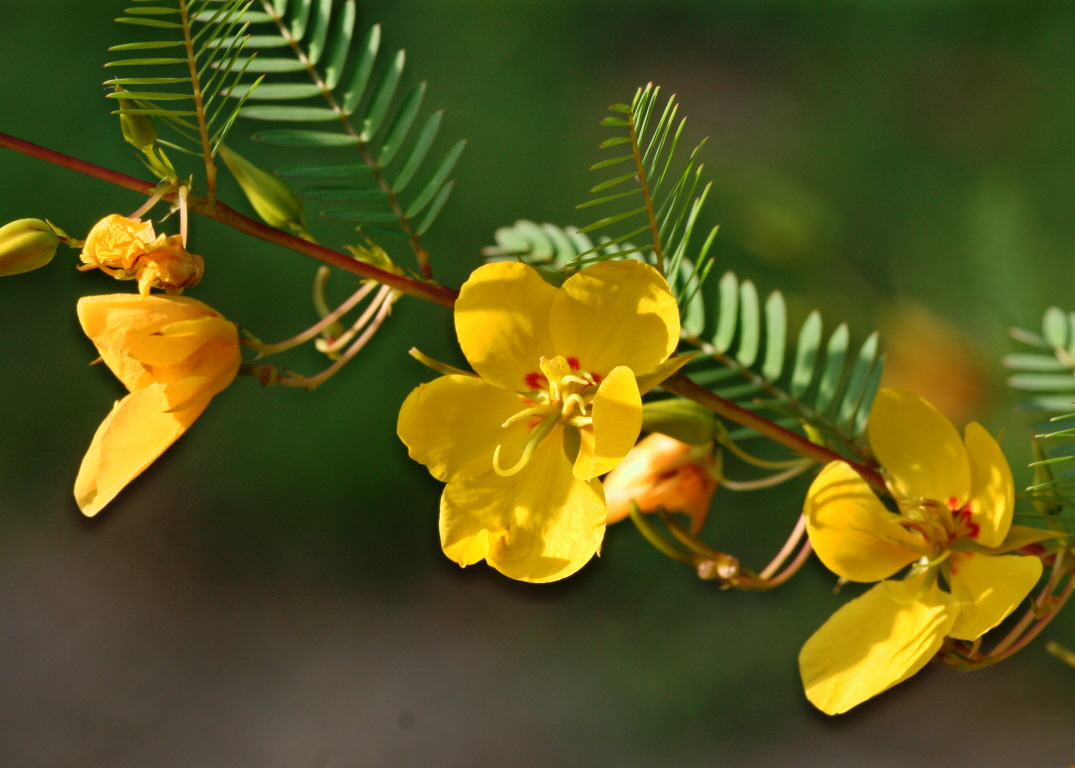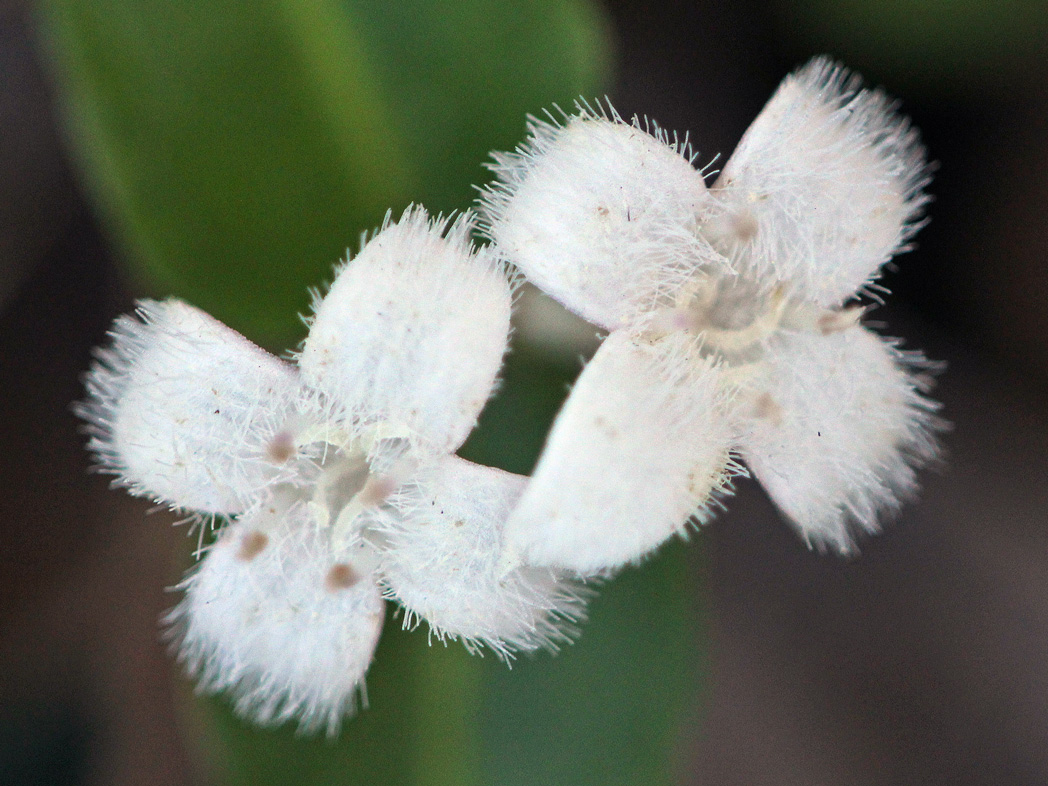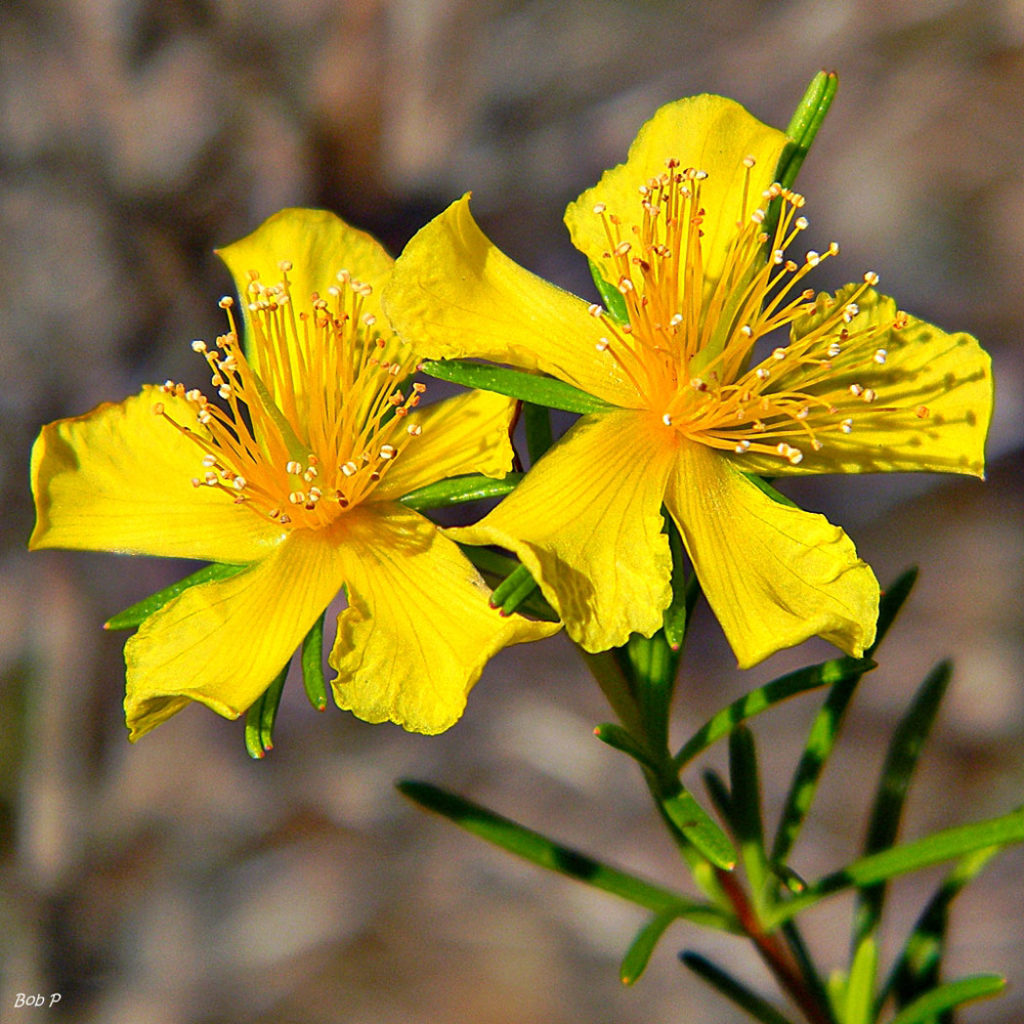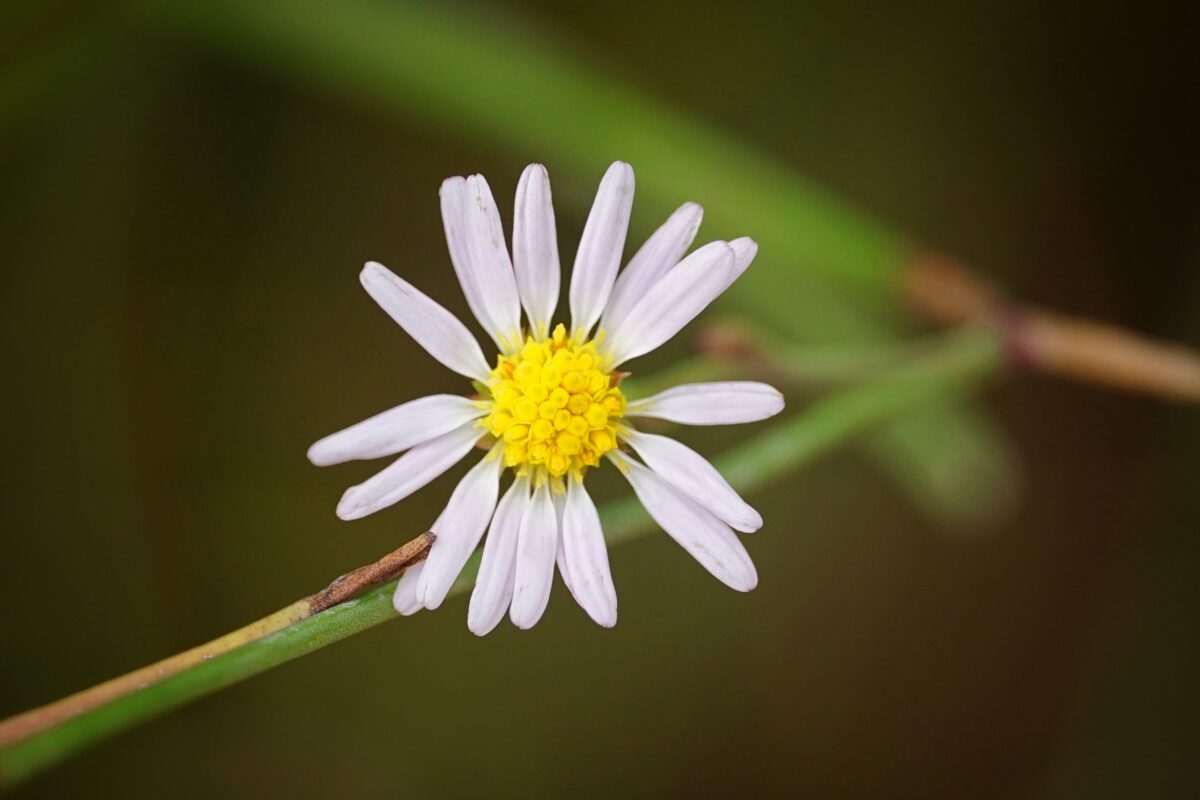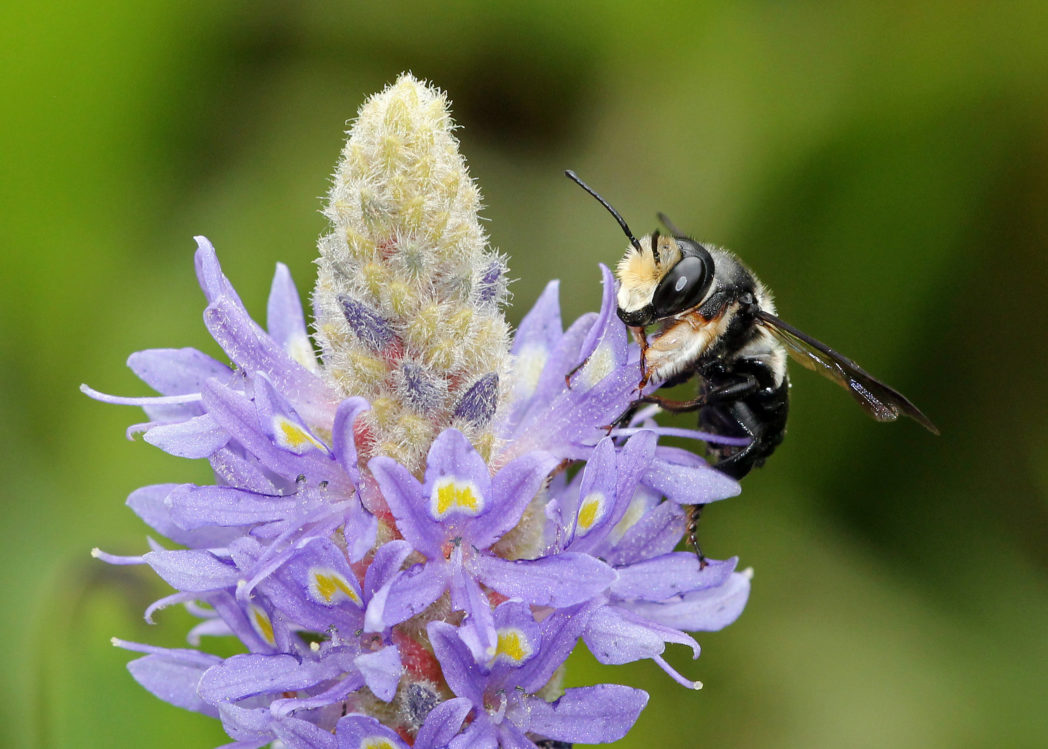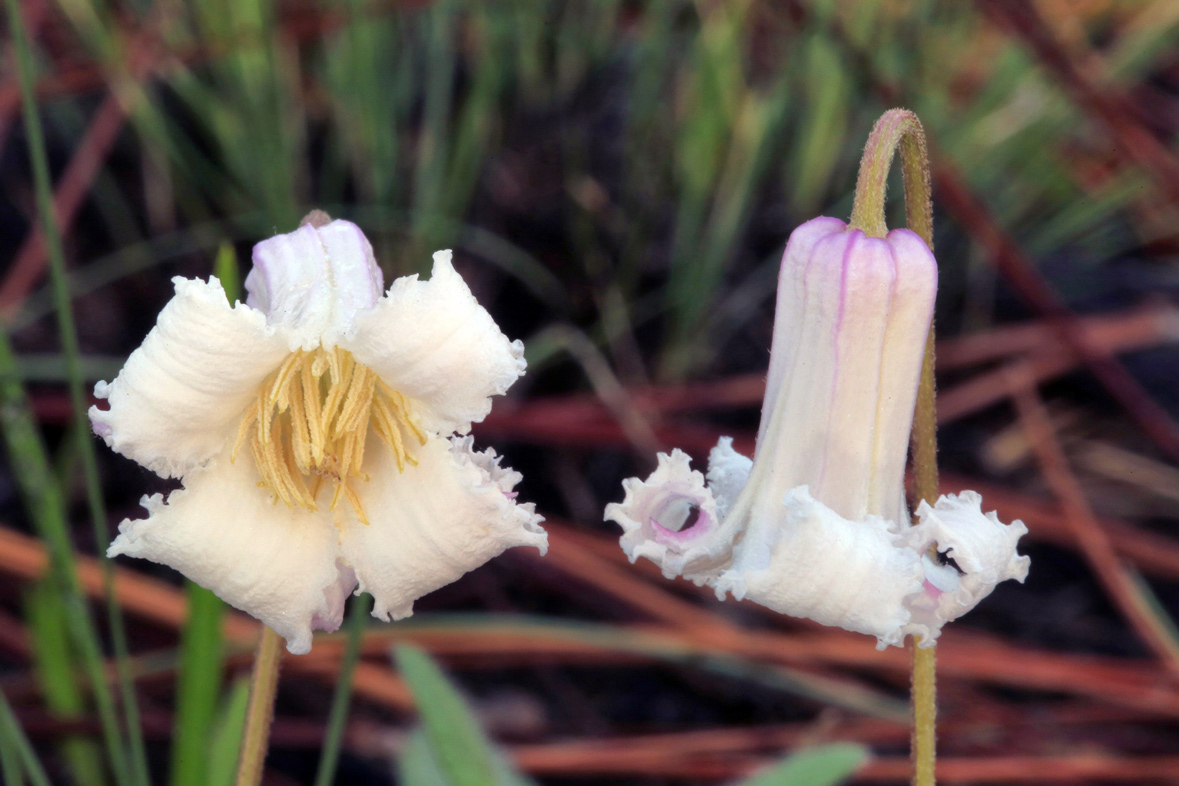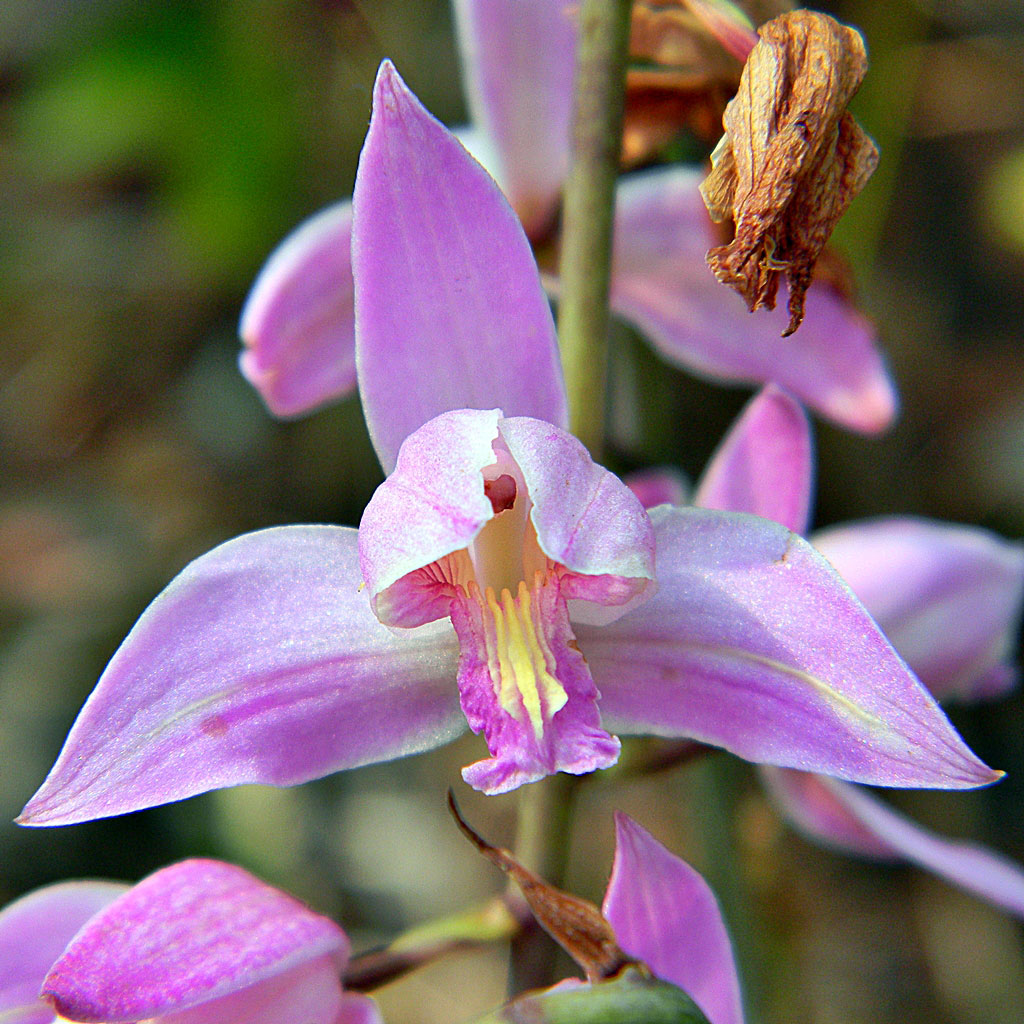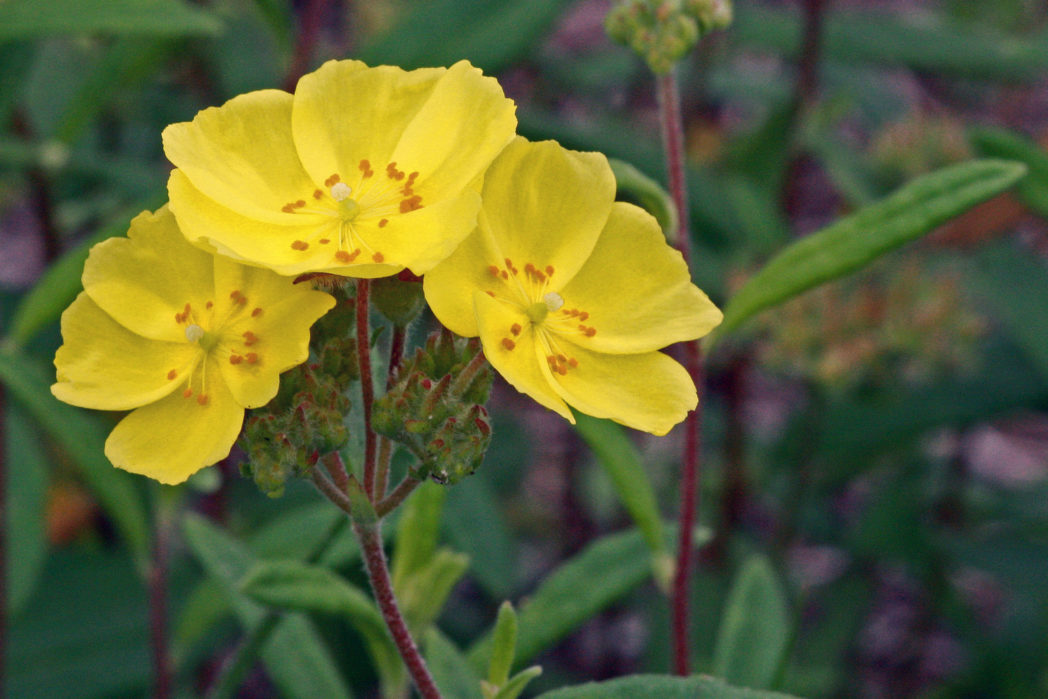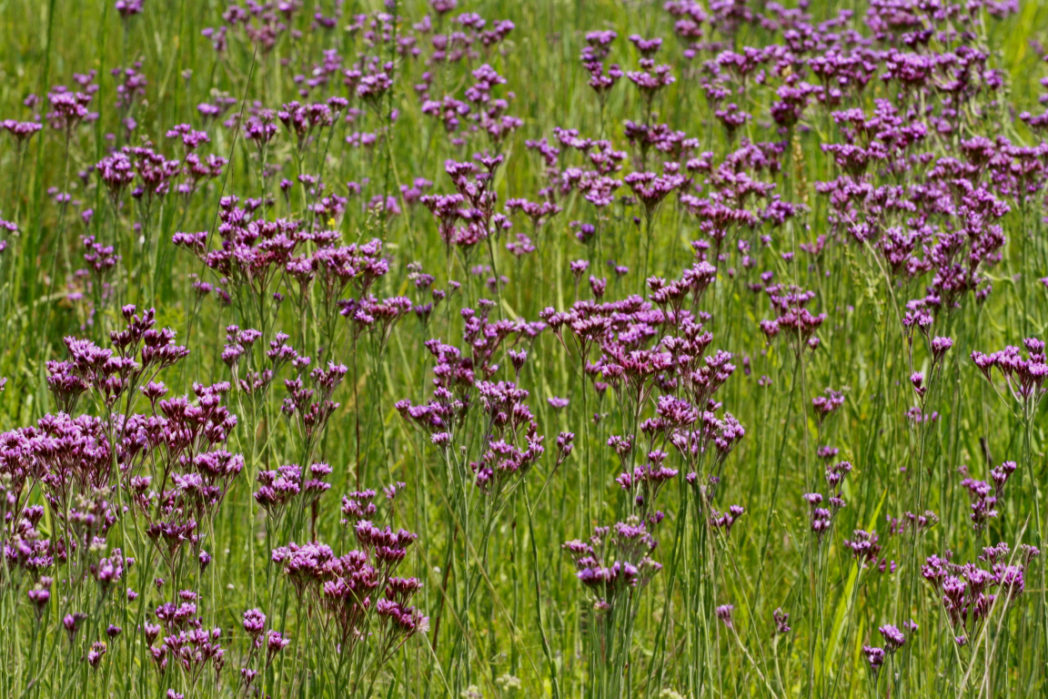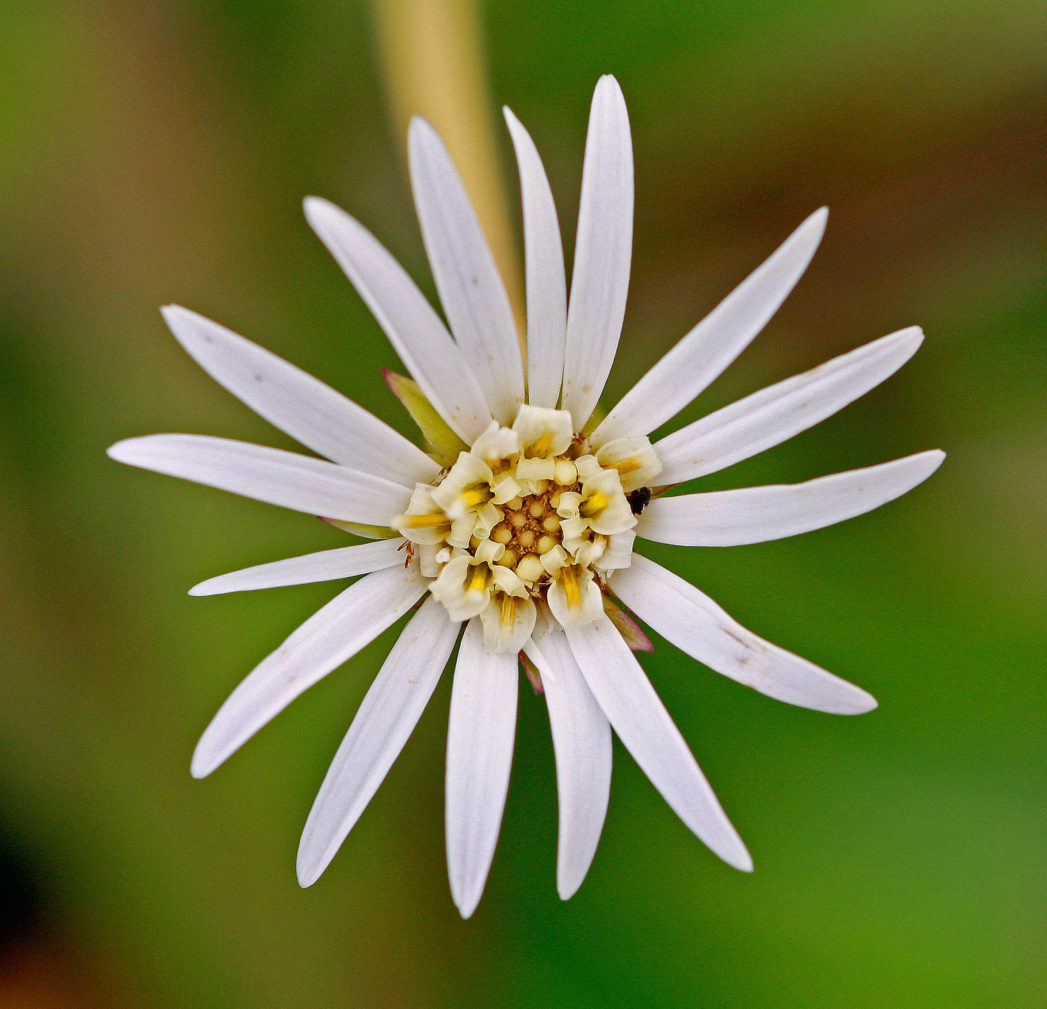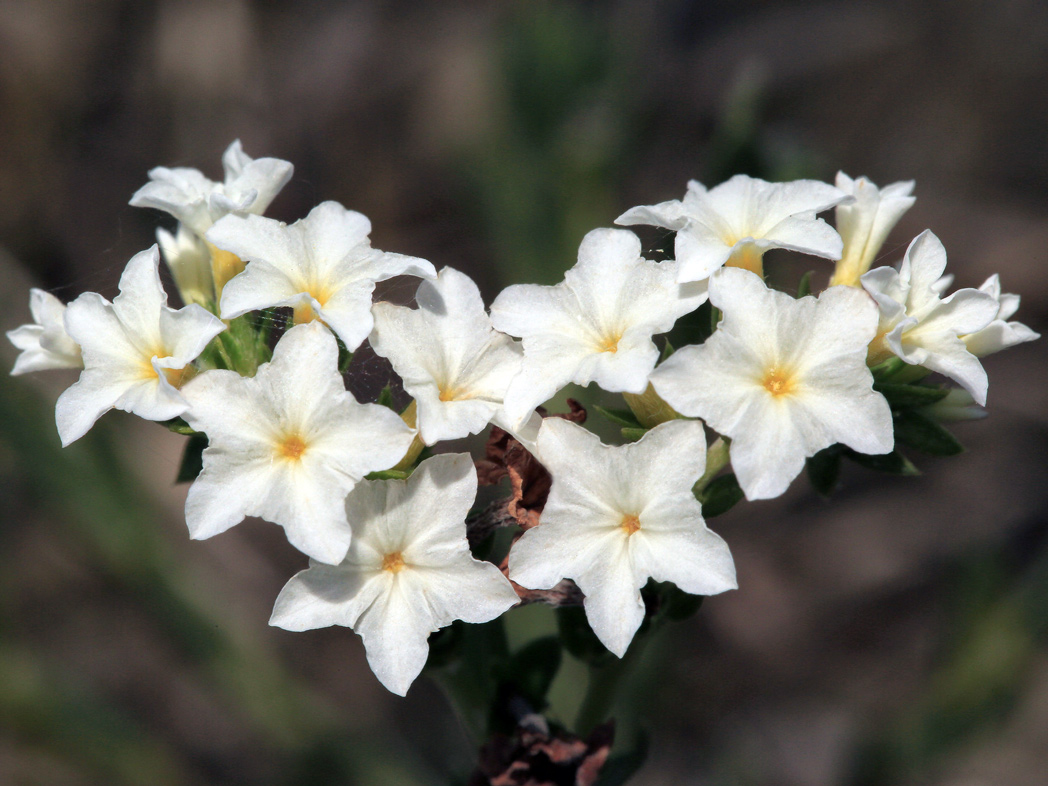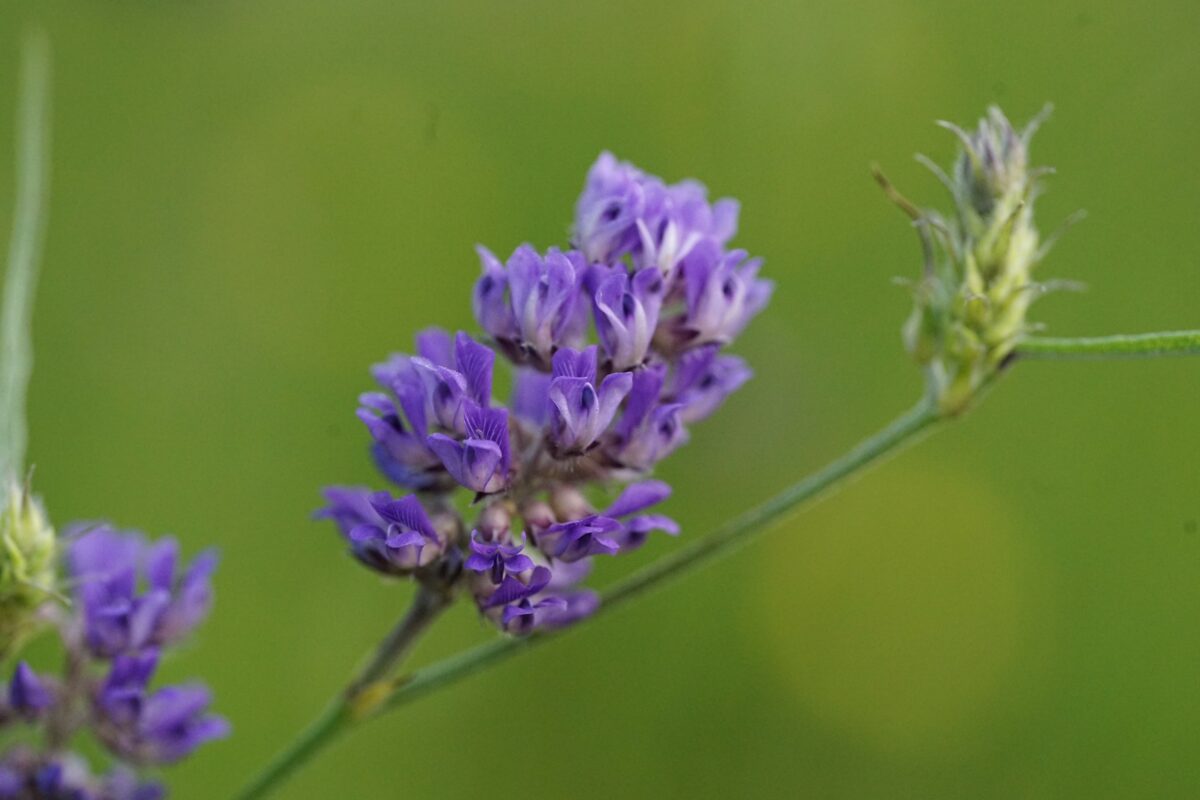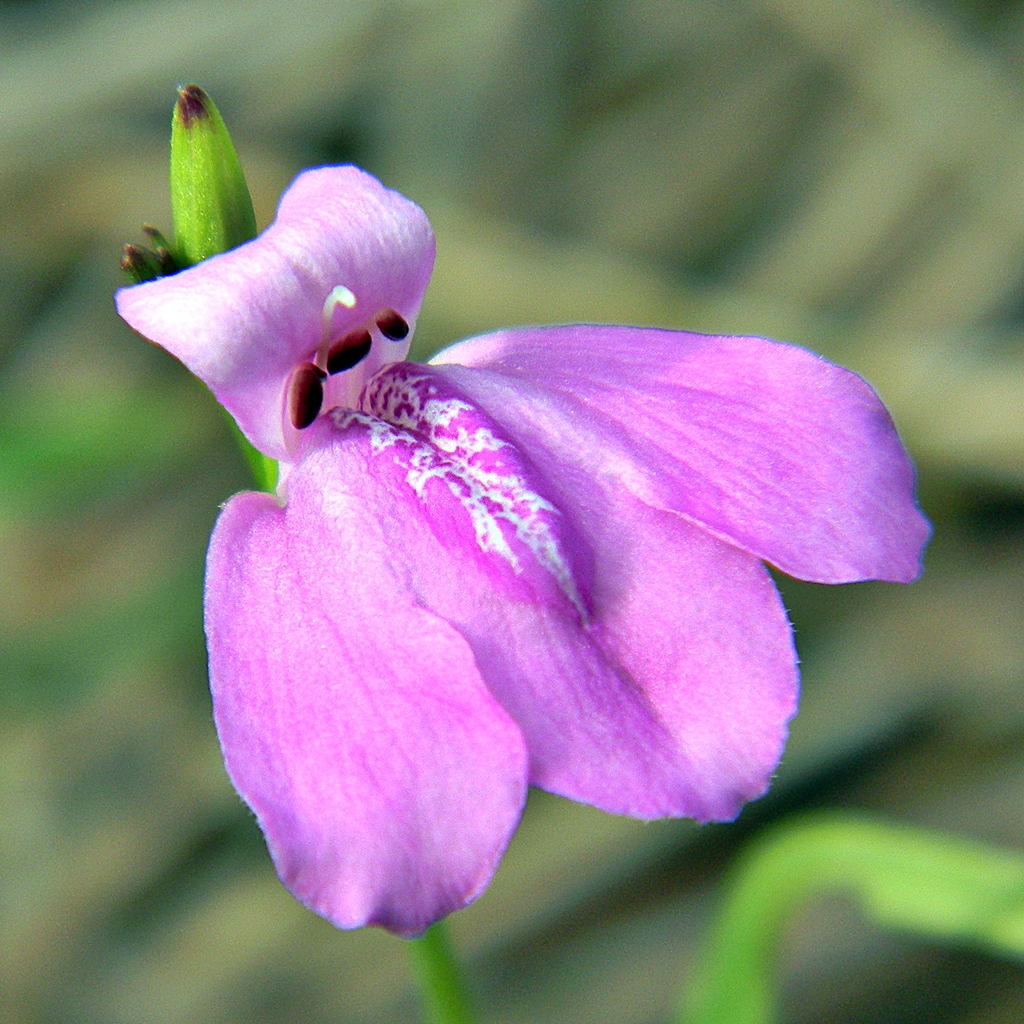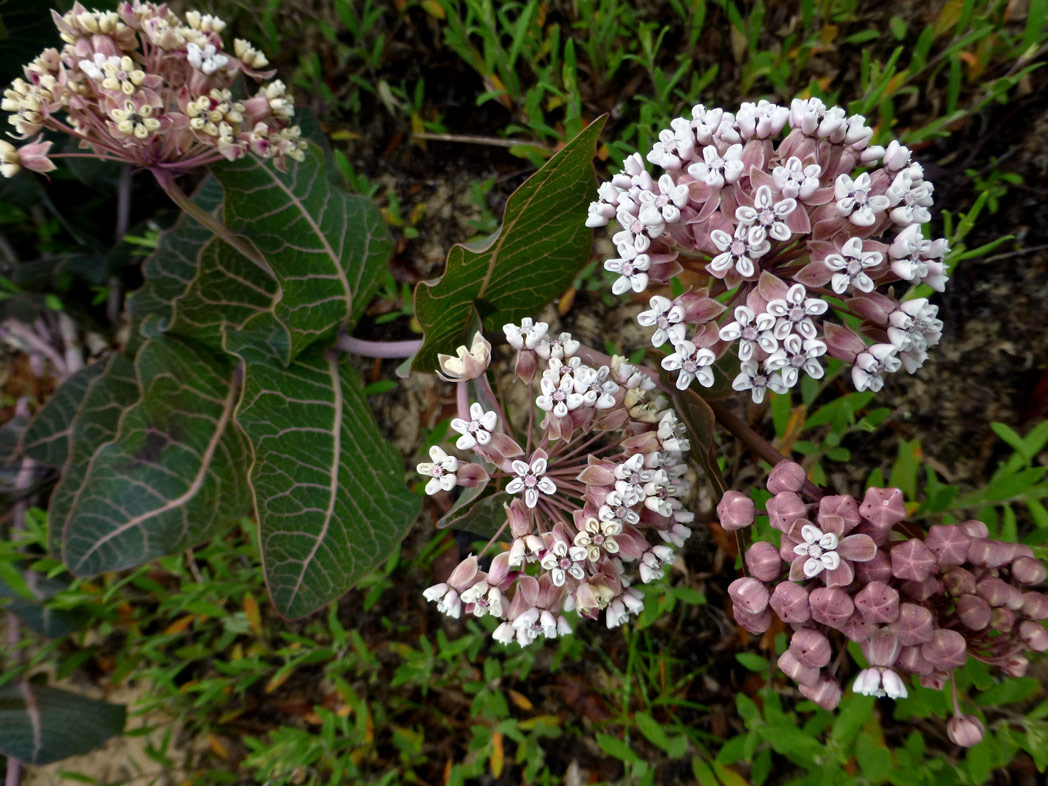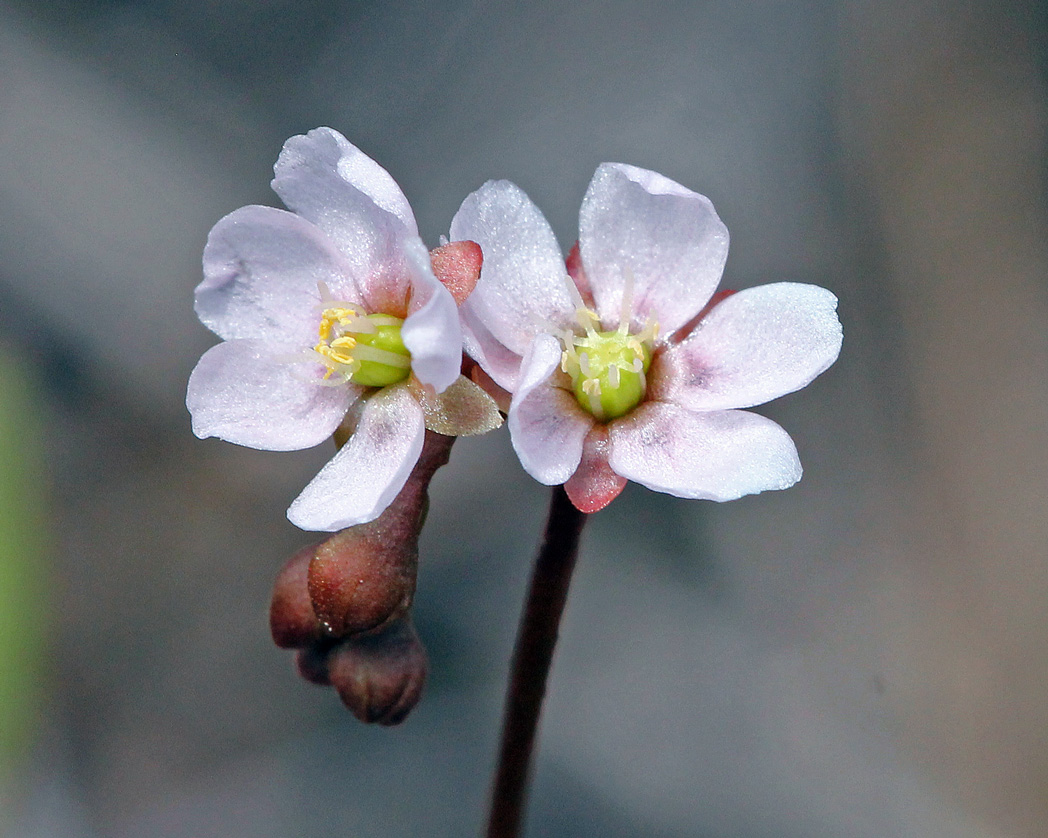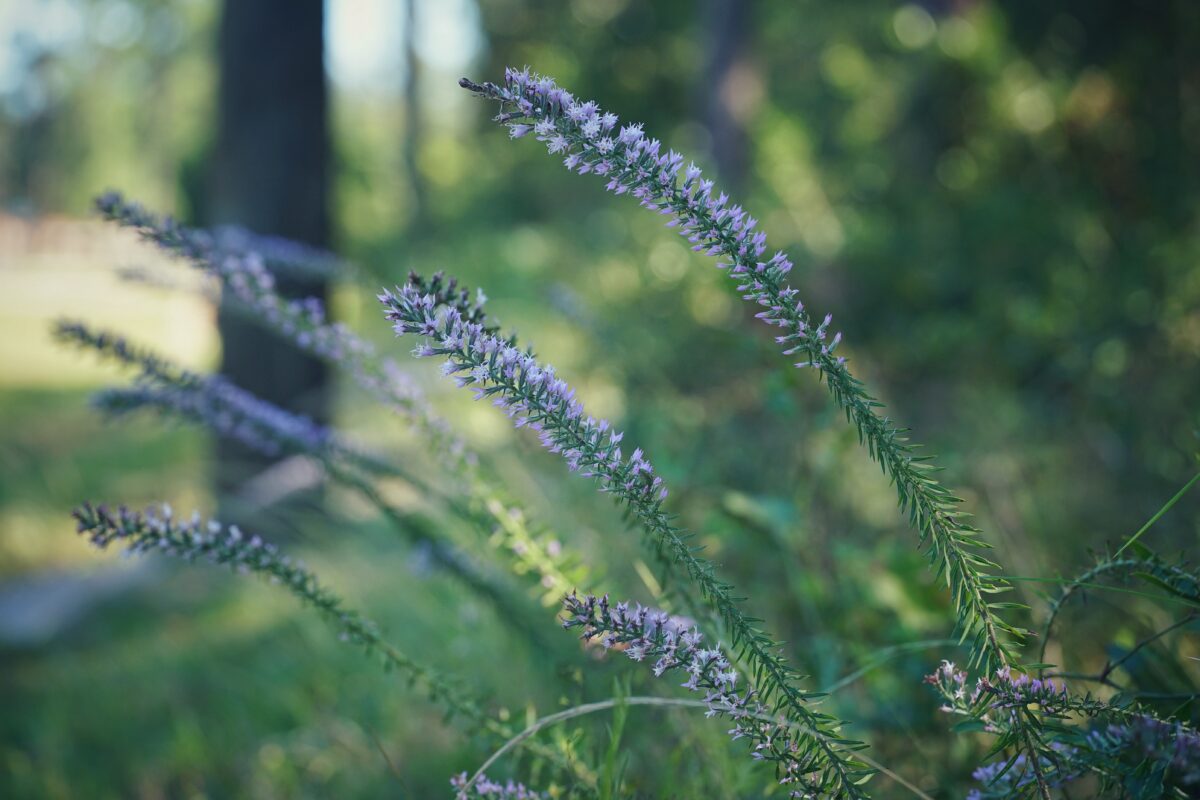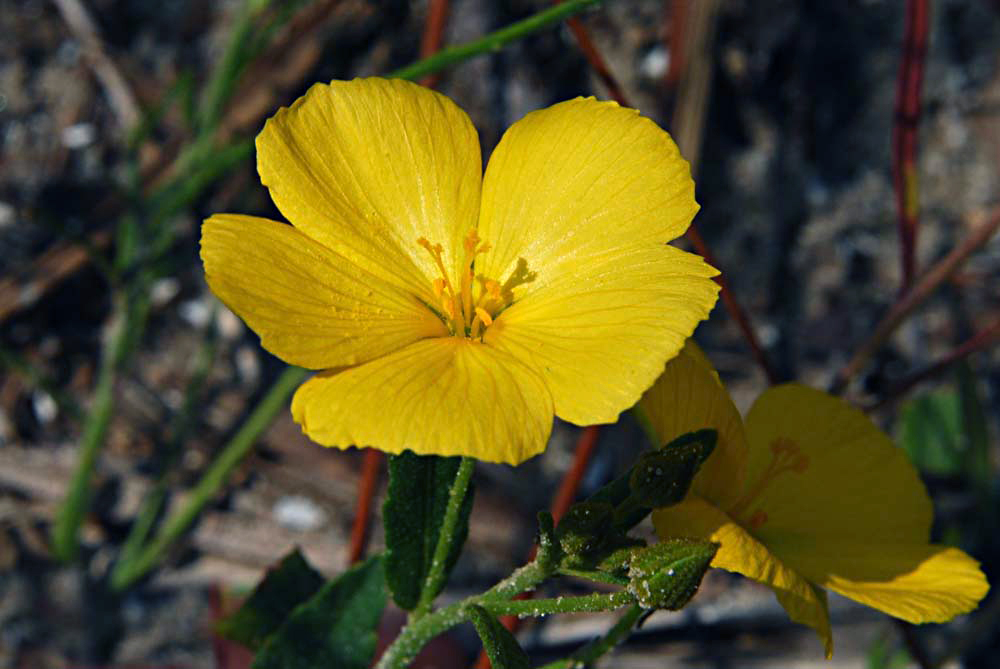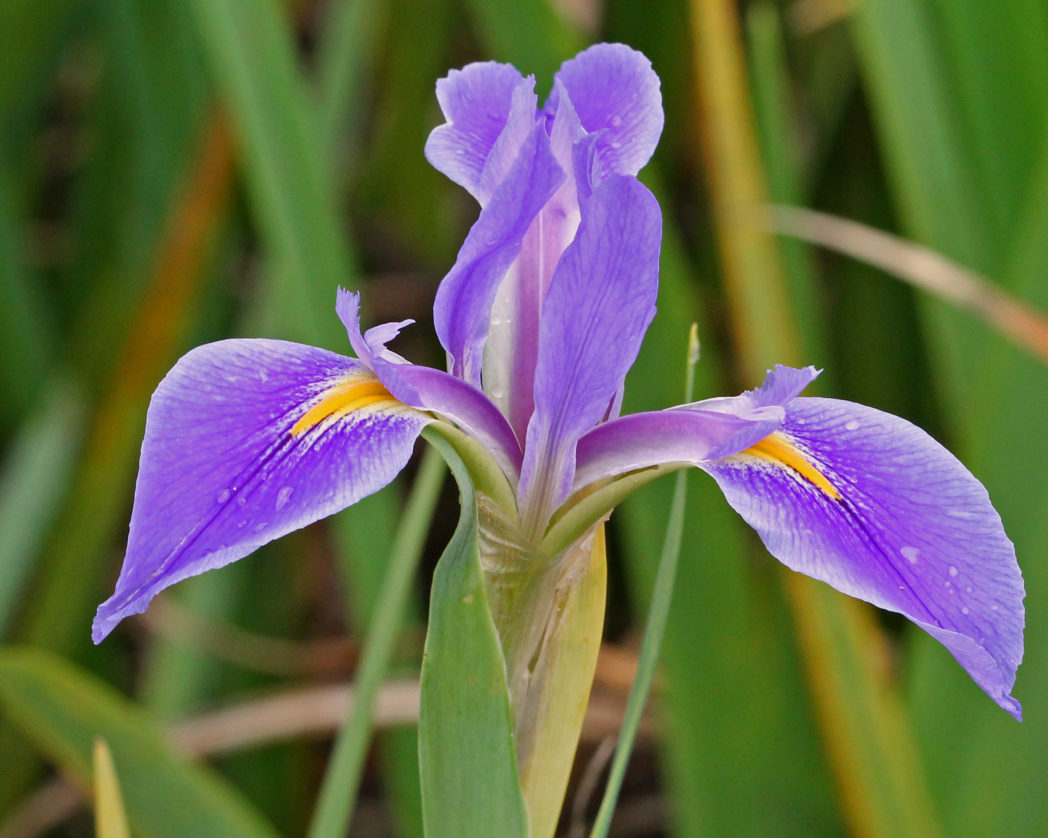Orange milkwort
Orange milkwort (Senega lutea) is a short but showy wildflower found in bogs, savannas, pine flatwoods and roadside ditches throughout Florida. It typically blooms March through November, but can bloom year-round.
Paintedleaf
Paintedleaf (Euphorbia cyathophora) occurs naturally on roadsides and in pinelands, hammocks and other disturbed areas. It can bloom throughout the year and its tiny flowers attract butterflies and bees.
Pale grasspink
Pale grasspink (Calopogon pallidus) is a terrestrial orchid found in bogs and wet flatwoods, prairies and roadsides. It blooms spring through summer and attracts mainly bees.
Pale meadowbeauty
Pale meadow beauty (Rhexia mariana) is a perennial wildflower with showy pink blooms. It flowers spring through fall and attracts many bees and butterflies.
Parrot pitcherplant
Parrot pitcherplant (Sarracenia psittacina) is a carnivorous perennial plant. It typically flowers in April and May and occurs naturally in seepage slopes, wet prairies, depression marshes, dome swamps, and bogs.
Parsley haw
Parsley haw (Crataegus marshallii) is an important source of nectar for a variety of pollinators and is a larval food source for many butterfly and moth species.
Partridge pea
Partridge pea (Chamaecrista fasciculata) is a larval host for several butterflies, including the Gray hairstreak and Cloudless sulphur. The plant is also used by bees, ants, flies, wasps, birds and other wildlife.
Partridgeberry
Partridgeberry (Mitchella repens) is a dainty mat-forming vine with fuzzy white flowers that a variety of insects, especially bumble bees. Its fruits are enjoyed by birds, small mammals and humans!
Peelbark St. John’s wort
Also known as Sandweed, Peelbark St. John’s wort (Hypericum fasciculatum) is an evergreen shrub found in wet pinelands and savannas, and along the margins of swamps, freshwater marshes and ponds.
Perennial saltmarsh aster
Perennial saltmarsh aster (Symphyotrichum tenuifolium) is one of the few large-flowered species present among the grasses and rushes of the salt marsh. It plays an important ecological role for native bees!
Pickerelweed
Pickerelweed (Pontederia cordata) typically blooms in spring through summer and occurs naturally in open, aquatic habitats such as pond, lake or river edges, marshes and swamps.
Pine-hyacinth
Pine-hyacinth (Clematis baldwinii) is an endemic wildflower that typically blooms spring through fall. Its flowers attract a variety of pollinators, its fruit provides food for many birds and small wildlife.
Pine-pink
Pine-pink (Bletia purpurea) is a state-threatened terrestrial orchid found in swamps, marshes, pinelands and pine rocklands in southern Florida. Its striking pink flowers bloom in winter, spring and early summer. Pine-pink flowers are a food-deceptive species. They do not contain nectar, but may attract bees and other insects with their conspicuous floral display. However, like many orchid species, Pine-pink is self-pollinating, and some of its flowers are cleistogamous, meaning the bud self-pollinates and never fully opens.
Pinebarren frostweed
Pinebarren frostweed (Crocanthemum corymbosum) has delicate lemon-yellow flowers that bloom spring through summer and attract a variety of pollinators. Blooms are many, but last only one day.
Pineland chaffhead
Pineland chaffhead (Carphephorus carnosus) typically blooms late summer through early fall and attracts butterflies, moths and other pollinators. It is endemic to only 13 Central and South Florida counties.
Pineland daisy
Pineland daisy (Chaptalia tomentosa) is an early-blooming aster found in wet flatwoods, bogs and freshwater marshes. It begins as nodding bud, and opens into a wheel of white ray florets.
Pineland heliotrope
Don’t forget Pineland heliotrope (Euploca polyphylla) if you’re looking for year-round blooms! This member of the forget-me-not family is a Florida endemic and is adaptable to a variety of conditions. Its small white or yellow flowers attract many pollinators.
Pineland leatherroot
Pineland leatherroot (Orbexilum virgatum) is an exceptionally rare and beautiful perennial wildflower that inhabits dry to moist areas of pine savannahs. Its bright purple flowers bloom from late spring into midsummer.
Pineland waterwillow
Pineland waterwillow (Justicia angusta) is an elegant wildflower found in lake and pond margins and wet pinelands, prairies and disturbed areas throughout much of Florida. It is near-endemic, occurring outside of Florida in only a few Georgia counties. The plant blooms spring through fall and attracts mostly bees. The genus name Justicia is an homage to Sir James Johnson, an 18th century Scottish horticulturalist. The species epithet angusta is from the Latin angustus, meaning “narrow,” and alludes to the plant’s narrow leaves.
Pinewoods milkweed
Pinewoods milkweed (Asclepias humistrata) occurs naturally in sandhills, scrub and dry, ruderal areas. It blooms in spring and summer, attracting many pollinators including wasps and butterflies.
Pink sundew
Pink sundew (Drosera capillaris) is an insectivorous wildflower that grows in abundance in wet pinelands, savannas and bogs, where it can form a glistening red carpet.
Pinkscale gayfeather
In fall, Florida’s natural areas and roadsides light up with flares of bright purple from our 17 native Liatris species. Among them, Pinkscale gayfeather (Liatris elegans) is one of the most beautiful and unique.
Pitted stripeseed
Pitted stripeseed (Piriqueta cistoides) is a cheerful perennial wildflower that emerges in early spring and typically blooms in late summer. It attracts small bees and butterflies.
Prairie iris
Prairie iris (Iris savannarum) is an emergent aquatic with showy flowers that bloom in spring. It has one of America’s largest native iris flowers.

